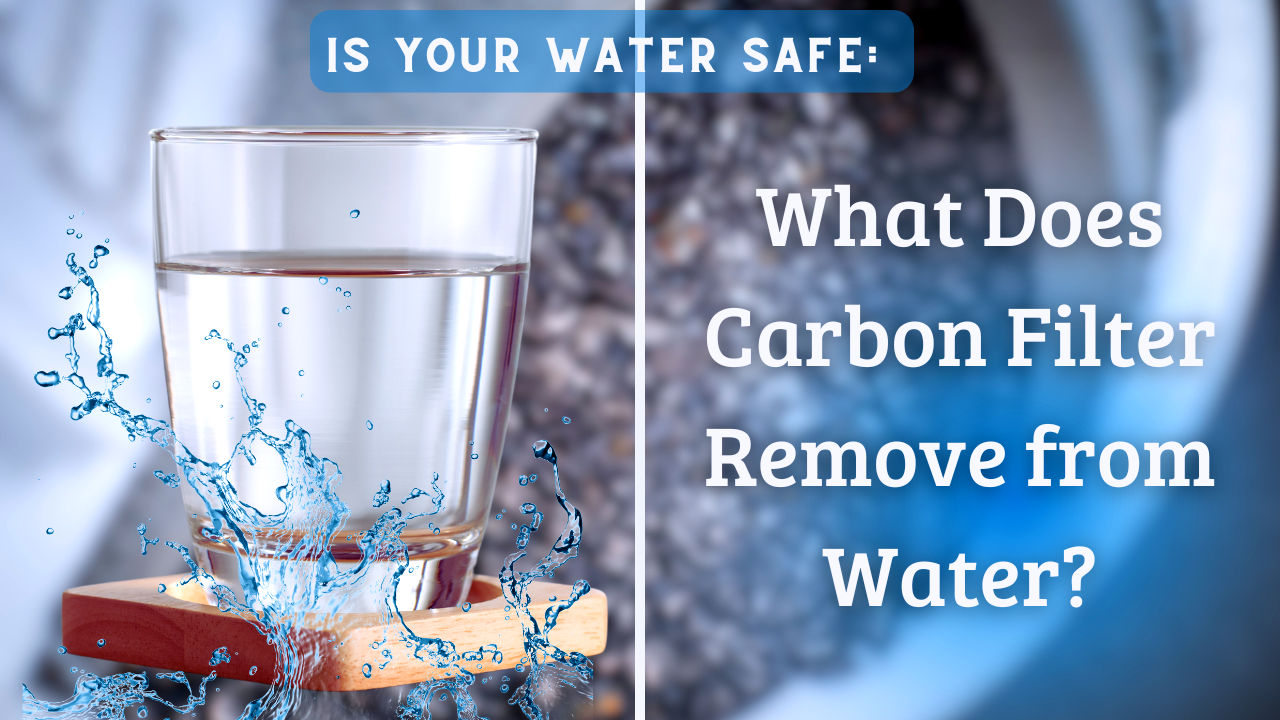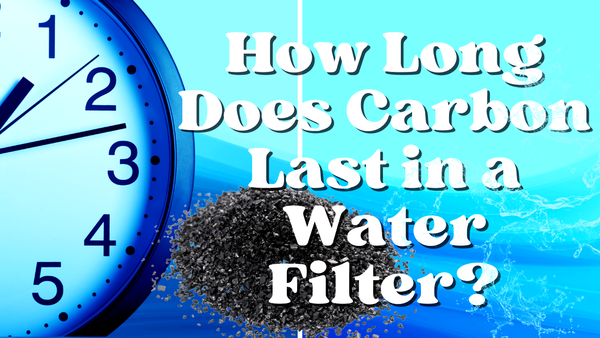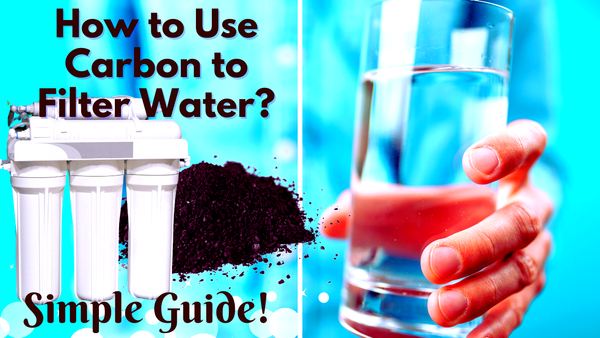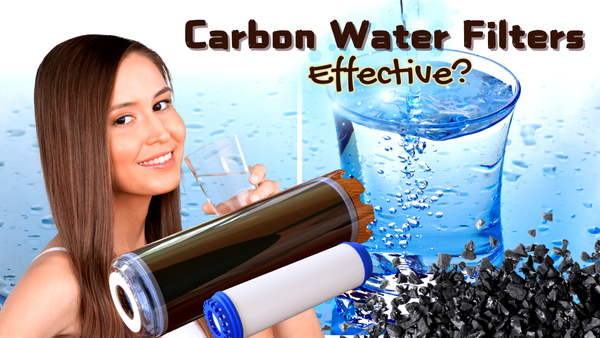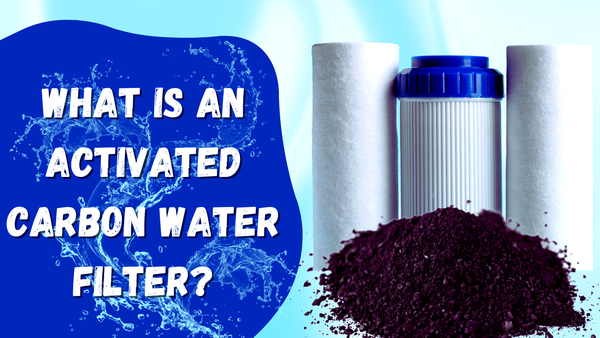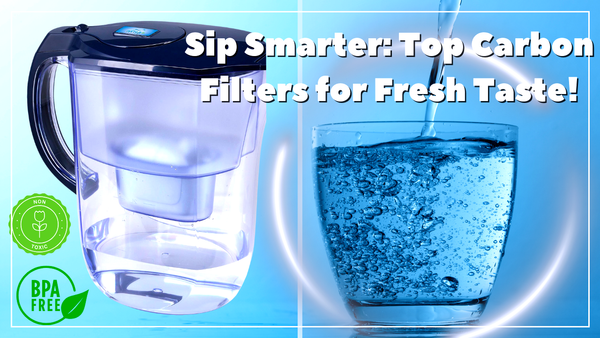Key Takeaways:
- Carbon filters effectively remove a wide range of contaminants from water, including chlorine, volatile organic compounds, and heavy metals.
- Activated carbon filters are highly efficient due to their large surface area and adsorption capabilities.
- Different types of carbon filters, such as granular activated carbon (GAC) and carbon block filters, offer various benefits for water filtration.
Water is essential for life, but ensuring its purity can be challenging. One of the most effective methods for purifying water is using carbon filters. But what does a carbon filter remove from water? This article delves into the specifics of carbon filtration, exploring how these filters work, what contaminants they remove, and why they are a popular choice for water treatment.
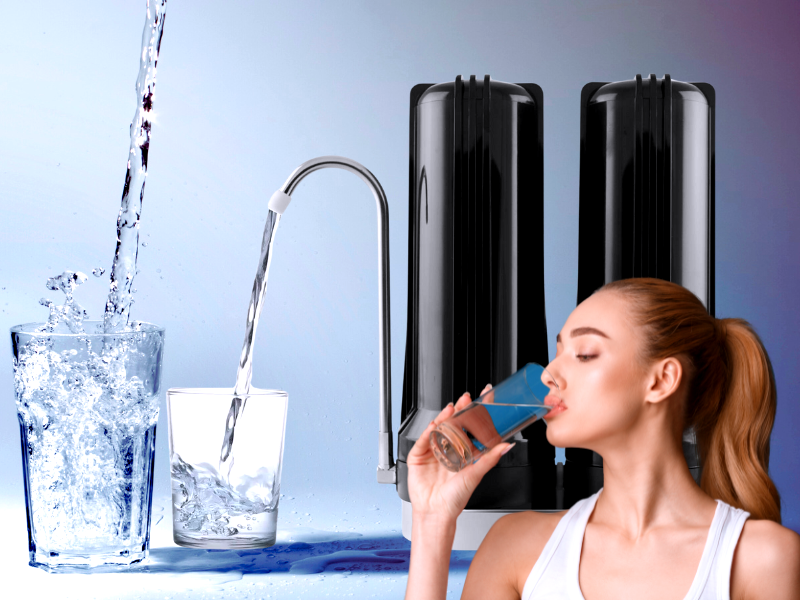
How Carbon Filters Work
Carbon filters (mainly activated carbon filters) work through a process called adsorption, where contaminants stick to the surface of the carbon particles. Activated carbon block filters with sub-micron ratings and mechanical filtration properties are super effective at removing odors, bad taste, and a whole bunch of nasty stuff. The large surface area of activated carbon (often from coconut shells or bituminous coal) makes it great at catching impurities.
When water passes through a carbon filter, contaminants are attracted to and stick to the carbon surface. This is different from absorption, where substances are taken into the material. Adsorption means contaminants are removed from the water, leaving it cleaner and safer to drink.
Types of Carbon Filters

Granular Activated Carbon (GAC) Filters
Granular activated carbon (GAC) filters use loose granules of activated carbon. These are great for removing organic chemicals, chlorine, and other contaminants. GAC filters are commonly used in point-of-entry systems, treating water as it enters a home or building.
Carbon Block Filters
Carbon block water filters are made by compressing activated carbon into a solid block, unlike granular activated carbon (GAC) filters which use loose carbon granules. This design increases the contact time between water and carbon, making the filter more effective. Carbon block filters are great at removing chlorine, volatile organic compounds (VOCs), and other contaminants.
Contaminants Removed by Carbon Filters
Chlorine and Chlorine Byproducts
One of the primary uses of carbon filters is to remove chlorine from water. Chlorine is used in water treatment plants to disinfect water, but it can leave a nasty taste and odor. Carbon filters remove chlorine and its byproducts, making drinking water taste and smell better.
Volatile Organic Compounds (VOCs)
Volatile organic compounds (VOCs) are chemicals that can evaporate into the air. They’re found in many household products and can get into water supplies. Activated carbon filters are great at removing VOCs, making water safer to drink.
Heavy Metals
Heavy metals like lead, mercury, and arsenic are serious health risks. Carbon filters (especially those with activated carbon) can remove these contaminants from water. This is especially important for private water systems that aren’t regularly tested for heavy metals.
Organic Chemicals and Pesticides

Activated carbon water filters also remove specific impurities like organic chemicals and pesticides from water but don’t reduce minerals or total dissolved solids (TDS). These contaminants get into water supplies through agricultural runoff and industrial processes. Using a carbon filter reduces the amount of this nasty stuff in your drinking water.
Hydrogen Sulfide and Radon Gas
Charcoal filters (which reduce phosphates and lithium) can remove hydrogen sulfide, giving water a rotten egg smell. Carbon filters can also reduce radon gas in water. Radon is a radioactive gas that’s a serious health risk if ingested or inhaled.
Improving Taste and Odor
One of the most obvious benefits of using a carbon filter is the improvement in water taste and odor. By removing chlorine, VOCs, and other contaminants, carbon filters make water taste better. This is especially good for those who drink and cook with tap water.
Surface Area and Adsorption Capacity
The effectiveness of a carbon filter is mostly due to its surface area. Activated carbon has a porous structure, providing a large surface area for adsorption. This allows the filter to trap more contaminants, making it very effective for water treatment.
Carbon Filtration in Water Treatment Plants
Water treatment plants use carbon filtration as part of their treatment process. By adding activated carbon filters, these plants can remove a wide range of contaminants, making the water supply safe to drink. This is especially important in areas with high industrial pollution.
Carbon Filters in Private Water Systems
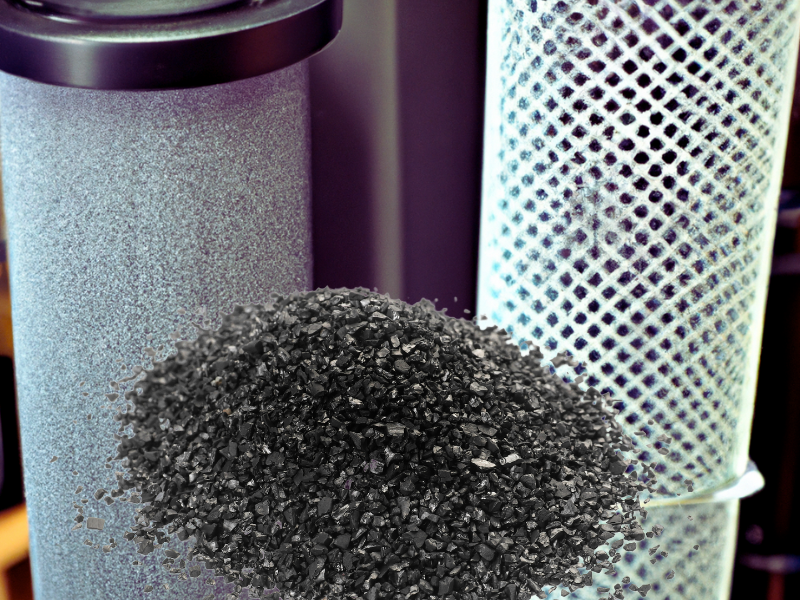
For those with private water systems, such as wells, carbon filters are an essential tool for ensuring water quality. These filters can remove contaminants that may not be present in municipal water supplies, providing an additional layer of protection for homeowners.
Mechanical Filtration and Carbon Filters
In addition to adsorption, where carbon filters remove contaminants by having particles stick to the filter surface, carbon filters also have mechanical filtration. The filter’s porosity and large surface area allow it to remove unpleasant tastes, odors, and particles from the water as it flows through the tiny pores. This is by trapping particles and sediment in the filter medium, improving water quality. Mechanical filters can remove larger particles, and activated carbon targets smaller contaminants.
Reverse Osmosis and Carbon Filters
Reverse osmosis systems often have carbon filters as part of their multi-stage filtration process. The carbon filter removes chlorine and other contaminants before the water goes through the reverse osmosis membrane. This combination gives highly purified water that is free from a wide range of impurities.
Environmental Protection Agency (EPA) Standards
The Environmental Protection Agency (EPA) sets standards for water quality, including maximum contaminant levels for various substances. Carbon filters help meet these standards by removing contaminants that can affect health. This ensures that the water you drink is safe and meets regulatory requirements.
NSF Certification
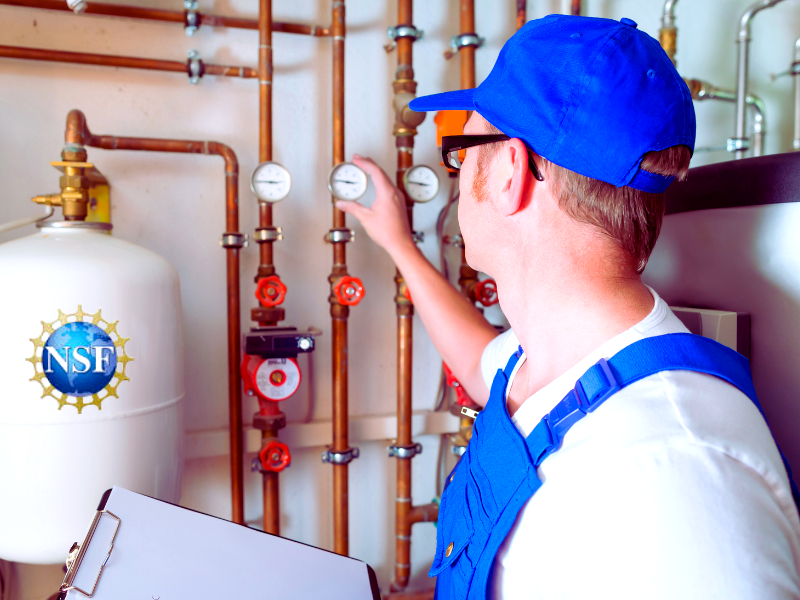
When choosing a carbon filter, look for National Sanitation Foundation (NSF) certification. This certification means the filter has been tested and meets specific standards for contaminant removal. NSF-certified filters assure you that the product will improve water quality.
Filter Media and Material Safety
The materials used in carbon filters are crucial for their effectiveness and safety. Activated carbon is typically made from coconut shells, bituminous coal, or wood. These materials are processed to create a highly porous structure, maximizing the filter's adsorption capacity. Ensuring the filter media is safe and effective is essential for reliable water treatment.
Water Flow and Filter Efficiency
The flow rate of water through a carbon filter can impact its efficiency. A slower flow rate allows more contact time between the water and the carbon, enhancing contaminant removal. It's important to choose a filter with an appropriate flow rate for your needs to ensure optimal performance.
Point of Entry vs. Point of Use Filters
Carbon filters can be used at the point of entry (POE) or point of use (POU). POE filters treat water as it enters a building, providing filtered water throughout the entire system. POU filters, on the other hand, treat water at a specific location, such as a kitchen faucet. Both types of filters offer benefits, depending on your water treatment needs.
Maintenance and Replacement
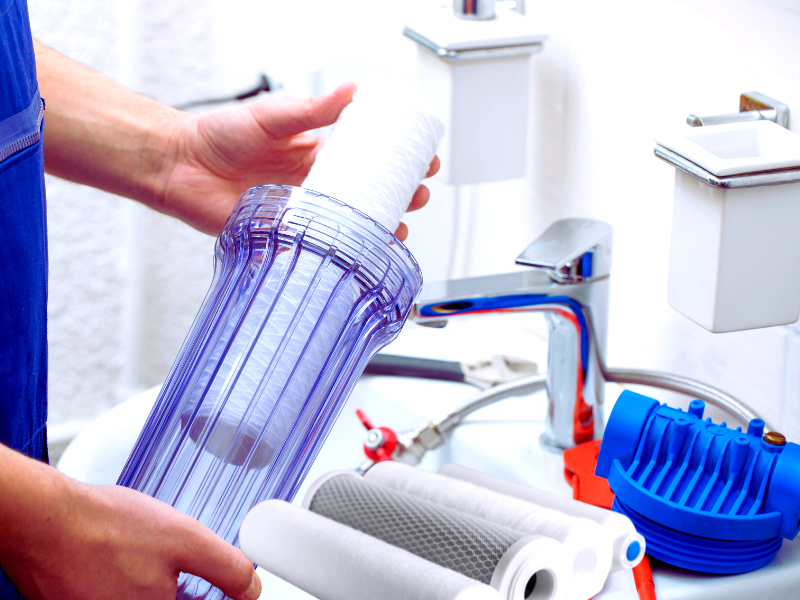
Regular maintenance and timely replacement of carbon filters are essential for their effectiveness. Over time, the filter media can become saturated with contaminants, reducing its ability to purify water. Follow the manufacturer's recommendations for replacement intervals to ensure your filter continues to provide clean, safe water.
Cost and Value
While carbon filters can vary in cost, they offer significant value in terms of water quality improvement. Investing in a high-quality carbon filter can provide long-term benefits, including better-tasting water and reduced health risks from contaminants. Consider the cost of replacement filters and maintenance when evaluating the overall value of a carbon filtration system.
Summary
Carbon filters are a powerful tool for improving water quality and removing a wide range of contaminants, including chlorine, VOCs, heavy metals, and more. By understanding how these filters work and the benefits they offer, you can make an informed decision about the best water treatment solution for your needs. Whether you choose a granular activated carbon filter, a carbon block filter, or a combination system, you can enjoy cleaner, safer, and better-tasting water. Keep up with the latest water filter tips and offers, and subscribe to our newsletter today!
FAQ
What contaminants do carbon filters remove from water?
Carbon filters remove a wide range of contaminants including chlorine, volatile organic compounds (VOCs), heavy metals, organic chemicals, pesticides, hydrogen sulfide, and radon gas. They also improve the taste and odor of water by removing these impurities.
How often should I replace my carbon filter?
The replacement interval for carbon filters depends on the filter itself and usage. Generally, it’s recommended to replace carbon filters every 6 to 12 months. But make sure to follow the manufacturer’s guidelines for your specific filter model to get optimal performance.
Are carbon filters good for all types of water?
Carbon filters are good for municipal water supply and private water systems. However, not all contaminants are like certain bacteria and viruses. For complete water treatment, consider a multi-stage filtration system that includes carbon filtration along with other methods like reverse osmosis.
